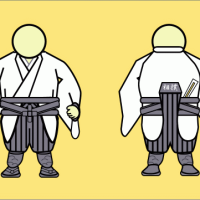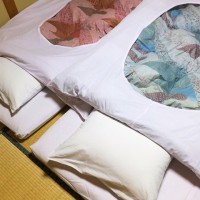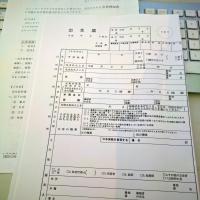Continuing from the part 2.
5. Solutions
Something has to be done, if the rural communities in Japan on the verge of extinction are to be saved. The problems have been known for a long time and numerous plans have been conceived to counteract the trend (Table 1). For example, the Emergency Act for the Improvement of Depopulated Areas had objectives of supporting the independence of the rural areas, improving the welfare of the residents, increasing employment opportunities, limiting and reducing regional wealth gaps and supporting the continuing existence of “a beautiful countryside” (Feldhoff, 2013). Most of the plans have obviously failed in their target to sustainably revitalize the countryside. One factor might be the traditionally top-down style of government in Japan and elite-dominated public sector. Even with the very poor track record, the wealth is being actively redistributed from the metropolitan areas to the countryside (Felfhoff, 2013). The latest effort comes from the current Abe government labeled Chiho Sosei, or ‘Creating Life in the Countryside’ (Rausch, 2015).

Table 1. List of some measures to counter the shrinking countryside in Japan (Feldhoff, 2013).
5.1. National methods
5.1.1. Economic
The most common method of revitalization has been direct subsidies for local infrastructure (Feldhoff, 2013). In addition to the improved facilities, the build-up phase provides a temporary boost in employment. Unfortunately, if permanent economical structural improvement is not achieved, the local boost will quickly fade away after reduction of support. This can lead to absurd situation of “roads to nowhere” with far too much capacity than usage. Later support plans have moved more towards “soft” support methods emphasizing immaterial revitalization instead of simply building things (Feldhoff, 2013). These include focus on the health care, promotion of tourism industry and cultivation of local specialty agricultural products. The current Chiho Sosei scheme also utilizes these soft support methods to the local industry promotion. In addition, tax cuts for companies moving to rural areas are allocated, thus potentially improving the job market (Rausch, 2015). Other infrastructure and supporting industries should follow the successful relocating companies, adding to the local economy. In regards to Northern Japan, the Chiho Sosei also includes plans to move public educational, cultural and administrative function to the area, supported by improved transportation, like the extension of the shinkansen network to Hokkaido (Rausch, 2015).
More direct approach has also been utilized for the most endangered communities. For example, Direct Payment to Farmers in Hilly and Mountainous Areas Scheme (Chusankanchiiki to chokusetsu shiharai seido) consisted of direct monetary support to farmers for encouraging the continuation of the local agriculture (Feldhoff, 2013). But, the downturn of national economy caused significant reduction in this kind of support from 2003 onwards forcing many small towns and villages into practical bankruptcy.
One of the most successful schemes has been the furusato nozei system, which allows the individuals and businesses to have a portion of their tax payments forwarded to a municipality of their choice and receive a small local tax break (Rausch, 2015). Both the city and rural dwellers can get behind such plan as it benefits them both. The countryside municipalities have started to offer gifts of local produce to the tax donators sparking a heated competition for the tax transfers (Rausch, 2015). On the other hand, this system will boost the local industry in addition to tax money received by the local government, but on the other hand the system may be hard on the municipalities without popular local specialties for use as the thank-you gifts. In fiscal 2014, a total of 14 billion yen of tax money was diverted from the cities to the rural communities (Rausch, 2015).

The amount of public spending per population in 2011. Red color indicates higher than national average spending, yellow indicates average spending and blue color below average spending (Ministry of Land, Infrastructure, Transport and Tourism via todo-ran.com, 2017).
5.1.2. Administrative
The boost in fertility is one of the most obvious methods to reverse the trend of declining populace. A Cabinet Office poll conducted in 2007 showed that women would be willing to have additional children if their husbands would help more with the child-rearing and house work (Kiyota, 2015). For this, fathers need to be home more. Thus, the central government has the goal of increasing the paternity leave to 13% (Kiyota, 2015). The plan is quite unlikely to succeed, because only 1.72% of the husbands used any of the paternity leave in 2009 (Kiyota, 2015). If the fertility rate would improve and stabilize to 2.1 by year 2030, the overall population in Japan would remain at 100 million for foreseeable future (Kato, 2014).
Increase in affordable daycare services may help young women to balance between babies or career enabling economical security with larger families. Currently the childcare facilities have long entry queues but the government is planning to increase the daycare services by 400000 positions by 2018 (Hu, 2016). On the other hand, the retirees as a focus group are more interested in health care facilities (Murakami et al., 2009). For the rural communities, the distribution of these new facilities is the key. If most of them are built in the bigger cities, the movement trend of young families to the urban centers is likely to increase. More services in the countryside, on the other hand, might help to reverse the trend. Administratively, the necessary services are being preserved in some cases, by combining smaller municipalities into larger government areas (Heisei no dai-gappei) ensuring at least some level of services, even though the distances to them may increase (Feldhoff, 2013).
As the rural areas are very dependent on the demand for agricultural products, boost in consumption of local foodstuffs may offer viability to the countryside. The central government has lately being trying to steer the eating habits to support this with so called “Food Action Nippon” campaign (Feldhoff, 2013). The effort includes 5000 partners and tries to reach its goals through five general ideas: eating seasonal foods, eating locally produced foods, increasing the amount of rice and vegetables in the diet, reduce the food waste, and education of people about food-related topics.
5.2. Local initiatives
If the revitalization of the smallest communities seem impossible, focusing on the local urban centers may help prevent some of the migration to the Kanto and Kansai metropolises. Concentrating an attractive collection of commercial, cultural, administrative and social services in these centers may help with the population retention (Kato, 2014). A stronger local urban center also provides better support for the surrounding rural areas than bigger metropolitan areas further away. Efficient transportation and infrastructure is the key for sustaining the local center city and surrounding middle- and small sized municipalities (Kato, 2014).
The local governments also try to increase the diversity on income sources by promoting the farmers to engage in the production of renewable energy, leisure and tourism services to supplement the farming income (Feldhoff, 2013). This is likely to be more sustainable approach than focusing on one industry, as diversified income sources increase the robustness of the economy. Furthermore, the diversification requires more wide range of skillsets offering job opportunities for wider range of people.
Local allocation and sharing of assets may be the key for long term sustainable livelihood. So called asset-based community development (ABCD) aims increase community ownership, local engagement and shift from deficiencies to local assets and capabilities (Feldhoff, 2013). Local people usually know the strengths of the community better than the detached bureaucrats in Tokyo. If the government red tape and local disagreements could be settled the ABCD approach might reduce the dependency on the outside funding, increase the retention of wealth and assets, maintain the local culture and finally help retain the populace. The chiho sosei plan also includes an element that aims to utilize the local strengths of the community; special produce, culture and local identity (Rausch, 2015). In northern Japan these include the focus on tourism in Hokkaido and agriculture as well as fishing in Tohoku. For example, Trugaru district in Aomori prefecture has been famous as producer of high quality apples, but the climate change has made the production difficult. The local chiho sosei plan has promoted a gradual change to peach production, which is more suited for the current climate in the area (Rausch, 2015). The rural produce from different locales are promoted through branding to all over Japan, with 598 registered chiiki brands in 2015 (Rausch, 2015).
Multi-habitation is seen as one solution for the problem. Especially the baby-boomer generation has lately transitioned into retirement and are looking for suitable context for the rest of their years (Murakami et al., 2009). They grew up during the economic expansion, thus being relatively wealthy, and currently are not tied down by their offspring or mortgage anymore. The concept of multi-habitation consists of owning homes in both the urban centers and the countryside (Murakami et al., 2009). This is no doubt made easier by the abundance of empty and very low cost rural housing. Local government can boost this partial migration to the countryside by advertising and providing assistance for the potential retirees looking for second homes. Interestingly, there is a gender gap in these rural dwelling retirees. The social network of men is often build around the colleagues at work, whereas women have friends through children and neighborhood groups, and thus the men have less ties with the urban life after retirement (Murakami et al., 2009).
To the part 4.













4 vastausta to “Problems of Emptying Countryside in Northern Japan (miniseries part 3)”